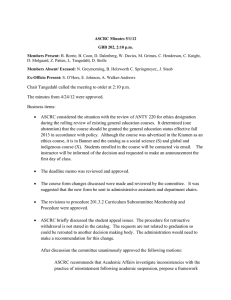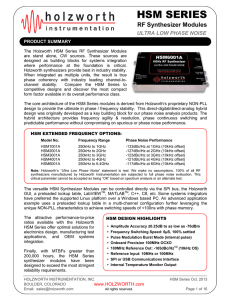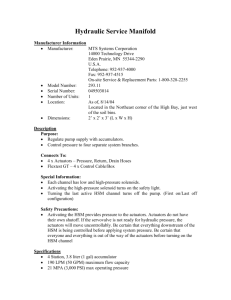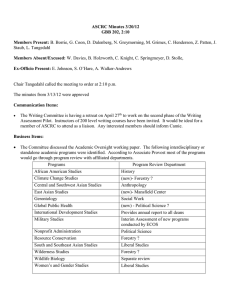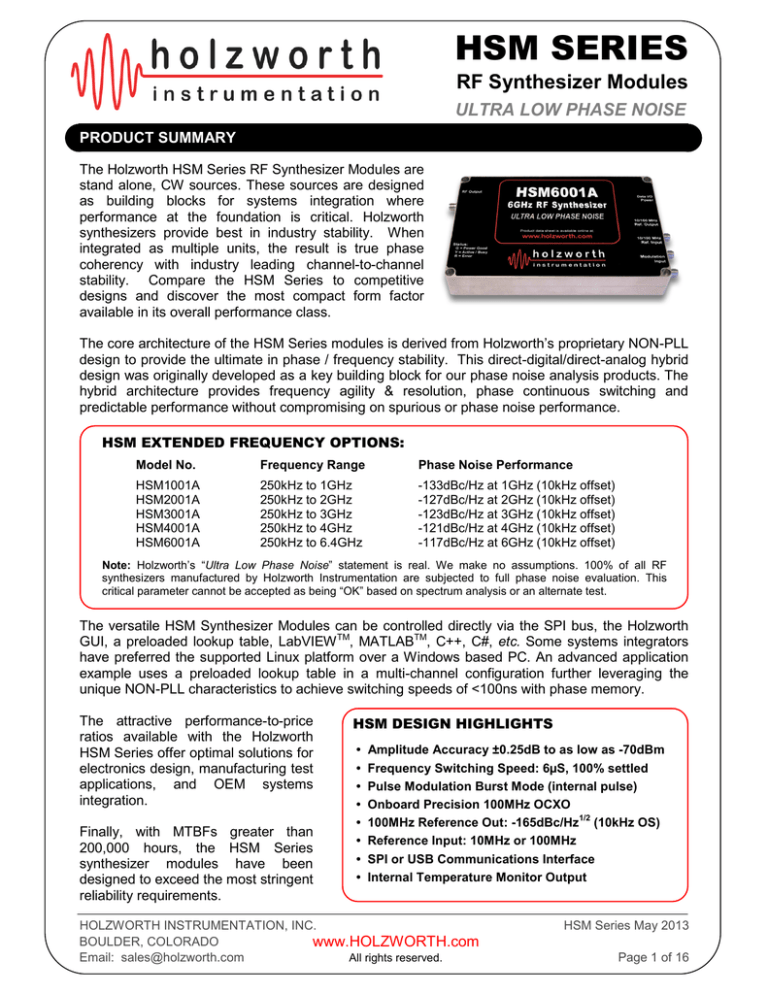
HSM SERIES
RF Synthesizer Modules
ULTRA LOW PHASE NOISE
Holz
PRODUCT SUMMARY
The Holzworth HSM Series RF Synthesizer Modules are
stand alone, CW sources. These sources are designed
as building blocks for systems integration where
performance at the foundation is critical. Holzworth
synthesizers provide best in industry stability. When
integrated as multiple units, the result is true phase
coherency with industry leading channel-to-channel
stability. Compare the HSM Series to competitive
designs and discover the most compact form factor
available in its overall performance class.
The core architecture of the HSM Series modules is derived from Holzworth’s proprietary NON-PLL
design to provide the ultimate in phase / frequency stability. This direct-digital/direct-analog hybrid
design was originally developed as a key building block for our phase noise analysis products. The
hybrid architecture provides frequency agility & resolution, phase continuous switching and
predictable performance without compromising on spurious or phase noise performance.
HSM EXTENDED FREQUENCY OPTIONS:
Model No.
Frequency Range
Phase Noise Performance
HSM1001A
HSM2001A
HSM3001A
HSM4001A
HSM6001A
250kHz to 1GHz
250kHz to 2GHz
250kHz to 3GHz
250kHz to 4GHz
250kHz to 6.4GHz
-133dBc/Hz at 1GHz (10kHz offset)
-127dBc/Hz at 2GHz (10kHz offset)
-123dBc/Hz at 3GHz (10kHz offset)
-121dBc/Hz at 4GHz (10kHz offset)
-117dBc/Hz at 6GHz (10kHz offset)
Note: Holzworth’s “Ultra Low Phase Noise” statement is real. We make no assumptions. 100% of all RF
synthesizers manufactured by Holzworth Instrumentation are subjected to full phase noise evaluation. This
critical parameter cannot be accepted as being “OK” based on spectrum analysis or an alternate test.
The versatile HSM Synthesizer Modules can be controlled directly via the SPI bus, the Holzworth
GUI, a preloaded lookup table, LabVIEW TM, MATLABTM, C++, C#, etc. Some systems integrators
have preferred the supported Linux platform over a Windows based PC. An advanced application
example uses a preloaded lookup table in a multi-channel configuration further leveraging the
unique NON-PLL characteristics to achieve switching speeds of <100ns with phase memory.
The attractive performance-to-price
ratios available with the Holzworth
HSM Series offer optimal solutions for
electronics design, manufacturing test
applications, and OEM systems
integration.
Finally, with MTBFs greater than
200,000 hours, the HSM Series
synthesizer modules have been
designed to exceed the most stringent
reliability requirements.
HSM DESIGN HIGHLIGHTS
•
•
•
•
•
•
•
•
Amplitude Accuracy ±0.25dB to as low as -70dBm
Frequency Switching Speed: 6µS, 100% settled
Pulse Modulation Burst Mode (internal pulse)
Onboard Precision 100MHz OCXO
1/2
100MHz Reference Out: -165dBc/Hz (10kHz OS)
Reference Input: 10MHz or 100MHz
SPI or USB Communications Interface
Internal Temperature Monitor Output
HOLZWORTH INSTRUMENTATION, INC.
BOULDER, COLORADO
www.HOLZWORTH.com
All rights reserved.
Email: sales@holzworth.com
HSM Series May 2013
Page 1 of 16
HSM SERIES
RF Synthesizer Modules
ULTRA LOW PHASE NOISE
ELECTRICAL SPECIFICATIONS - FREQUENCY
The specified parameters for the HSM Series RF Synthesizer Modules are fully verified at final
performance test and 100% guaranteed for the warranted life of the product. Performance
specifications listed on this page are specific to Frequency.
FREQUENCY PERFORMANCE1
PARAMETER
Frequency Range
Model HSM1001A
Model HSM2001A
Model HSM3001A
Model HSM4001A
Model HSM6001A
Frequency Step Size
Phase Offset Resolution
250 kHz – 512 MHz
512 MHz – 1.024 GHz
1.024 GHz – 2.048 GHz
2.048 GHz – 4.096 GHz
4.096 GHz – 6.400 GHz
Switching Speed (Frequency)
SPI Mode (ASCII)
SPI Mode (Binary)
MIN
250 kHz
250 kHz
250 kHz
250 kHz
250 kHz
1.024 GHz
2.048 GHz
3.072 GHz
4.096 GHz
6.400 GHz
+2 dBm
0 dBm
+2 dBm
± 1 ppm/yr
1st year. ±0.5 ppm/yr each subsequent year
± 1 ppm
± 0.1 ppm
0 to 55 °C
±5%
100 MHz
50 Ω
10 / 100
± 4 ppm
50 Ω
+6 dBm
± 1 ppm
+10 dBm
+6 dBm
Sweep Range
100 kHz
Dwell Time
100 µs
100 s
2
2
65535
3201
Triggering
1
Settable from 100 kHz.
Settable from 100 kHz.
Settable from 100 kHz.
Settable from 100 kHz.
Settable from 100kHz to 6.720 GHz
Offset Accuracy:
±0.05 deg
±0.10 deg
±0.20 deg
±0.40 deg
±0.80 deg
Digital Sweep Modes
Operating Modes
Number of Points (STEP)
Number of Points (LIST)
COMMENTS
300 µs maximum by design.
< 3.072 GHz, 100 µs maximum by design. 75 µs typical.
≥ 3.072 GHz, 100 µs by design.
100 µs by design. Wideband Steps (full bandwidth)
6 µs by design. Narrowband Steps (<5% bandwidth)
Temperature Effects
Line Voltage Effects (12V)
External Reference Input
Input Frequency
10MHz Lock Range
10MHz External Amplitude
100MHz External Amplitude
Impedance
Waveform
0.001 Hz
MAX
0.1 deg
0.2 deg
0.4 deg
0.8 deg
1.6 deg
List/Step Sweep Mode (WB)
List/Step Sweep Mode (NB)
Internal Time Base Reference
(Oscillator Aging Rate)
Reference Output
Frequency
Amplitude
Impedance
TYPICAL
6.720 GHz
Nominal
Nominal
Software Select 10MHz, 100MHz or No Ext. Ref.
20Hz Locking BW, Internal OCXO remains on
20Hz Locking BW, Internal OCXO remains on
Internal OXCO shuts off
50 Ω (nom)
Sine
Step sweep (linear, internal)
List Sweep (arbitrary list of freq steps)
Simultaneous Amplitude sweep (list)
1 µs increments
Free Run, External Trigger
Specifications are subject to change per the discretion of Holzworth Instrumentation, Inc
HOLZWORTH INSTRUMENTATION, INC.
BOULDER, COLORADO
www.HOLZWORTH.com
All rights reserved.
Email: sales@holzworth.com
HSM Series May 2013
Page 2 of 16
HSM SERIES
RF Synthesizer Modules
ULTRA LOW PHASE NOISE
ELECTRICAL SPECIFICATIONS - AMPLITUDE
The specified parameters for the HSM Series RF Synthesizer Modules are fully verified at final
performance test and 100% guaranteed for the warranted life of the product. Performance
specifications listed on this page are specific to Amplitude.
AMPLITUDE PERFORMANCE1
2
PARAMETER
Output Power (Calibrated)
Resolution
Connector
SWR (S11)
f < 32MHz
32MHz < f < 1.024GHz
1.024GHz < f < 6.720GHz
Maximum Reverse Power
Max DC Voltage
> 100 kHz
Switching Speed (Amplitude)
SPI Mode
List / Step Sweep Mode
Absolute Level Accuracy
f < 10MHz
10MHz < f < 32MHz
32MHz < f < 4.096GHz
32MHz < f < 4.096GHz
4.096GHz < f < 6.4GHz
4.096GHz < f < 6.4GHz
SSB Phase Noise
100 MHz, 10kHz offset
500 MHz, 10kHz offset
1.0 GHz, 10kHz offset
2.0 GHz, 10kHz offset
3.0 GHz, 10kHz offset
4.0 GHz, 10kHz offset
6.0 GHz, 10kHz offset
Harmonics (CW mode)
Pout = 0dBm
Pout = +10dBm
Non-Harmonics (CW mode)
250 kHz to 3.072 GHz
3.072 GHz to 6.400 GHz
Sub-Harmonics (CW mode)
250 kHz to 3.072 GHz
3.072 GHz to 6.400 GHz
Jitter
155 MHz
622 MHz
2.488 GHz
MIN
TYPICAL
3
-70 dBm
2
MAX
+10 dBm
0.01 dB
50 Ω
1.4 (-15.6 dB)
1.15 (-23.0 dB)
1.3 (-17.7 dB)
COMMENTS
Settable from -100 to +15 dBm
SMA
1.7 (-11.7 dB)
1.4 (-15.6 dB)
1.5 (-14 dB)
25 VDC maximum by design.
*** Some applications may require reverse power protection.
10 mW (10dBm) max by design.
300 µs maximum by design. Settling to within 0.1 dB.
100 µs maximum by design.
0 to -70dBm
0 to -70dBm
+10 to -30dBm
-30 to -70dBm
+10 to -30dBm
-30 to -60dBm
+0.25/ -2.0 dB
+0.1/ -1.25 dB
± 0.10 dB
± 0.25 dB
± 0.15 dB
± 0.25 dB
NS
+0.6/ -2.0 dB
± 0.5 dB
± 1.0 dB
± 0.6 dB
+0.5/ -1.0 dB
≤ -153 dBc/Hz
≤ -139 dBc/Hz
≤ -133 dBc/Hz
≤ -127 dBc/Hz
≤ -123 dBc/Hz
≤ -121 dBc/Hz
≤ -117 dBc/Hz
≤ -145 dBc/Hz
≤ -134 dBc/Hz
≤ -128 dBc/Hz
≤ -122 dBc/Hz
≤ -117 dBc/Hz
≤ -115 dBc/Hz
≤ -111 dBc/Hz
-40 dBc
-30 dBc
-30 dBc
NS
-70 dBc
-60 dBc
-60 dBc
-50 dBc
@ 0 dBm
@ 0 dBm
-70 dBc
-60 dBc
-60 dBc
-50dBc
@ 0 dBm
@ 0 dBm
60 fs
61 fs
55 fs
NS
NS
NS
25C to 35C (case temperature)
≤ -152 dBc/Hz @ 20kHz offset
≤ -140 dBc/Hz @ 20kHz offset
≤ -134 dBc/Hz @ 20kHz offset
≤ -128 dBc/Hz @ 20kHz offset
≤ -124 dBc/Hz @ 20kHz offset
≤ -122 dBc/Hz @ 20kHz offset
≤ -118 dBc/Hz @ 20kHz offset
100Hz < BW < 1.5MHz
1kHz < BW < 5MHz
5kHz < BW < 20MHz
1
Specifications are subject to change per the discretion of Holzworth Instrumentation, Inc.
All MIN/ MAX (Minimum/ Maximum) performance parameters are guaranteed and 100% verified during final performance test.
3
Typical performance is “by design” and consistent with field performance data.
2
HOLZWORTH INSTRUMENTATION, INC.
BOULDER, COLORADO
www.HOLZWORTH.com
All rights reserved.
Email: sales@holzworth.com
HSM Series May 2013
Page 3 of 16
HSM SERIES
RF Synthesizer Modules
ULTRA LOW PHASE NOISE
ELECTRICAL SPECIFICATIONS - MODULATION (External Stimulus)
The modulation parameters listed here are based on modulation functions as related to the use of
an external modulation stimulus. Internal “self pulse” functions are available with the current
revision of the HSM series RF synthesizers (to be specified).
PARAMETER
PERFORMANCE
COMMENTS
FREQUENCY MODULATION1 (Analog)
Max Deviation
Resolution
Deviation Accuracy
Modulation Freq. Response
100 kHz
0.01% or 1mHz, whichever is greater
< ± 2%
DC to 20 kHz (-3dB)
Sensitivity when using Ext. Input
± 1V peak into 50Ω
DC Coupled
+ 1V: Maximum Positive Deviation
0V: Zero Deviation from Carrier
- 1V: Maximum Negative Deviation
PHASE MODULATION1 (Analog)
Modulation Deviation
Frequency Response
Resolution
±1.6 deg to ±180 deg
DC to 20 kHz (-3dB)
Frequency Dependent
Sensitivity when using Ext. Input
± 1V peak into 50Ω
DC Coupled
See Phase Offset Specification
+ 1V: Maximum Positive Deviation
0V: Zero Deviation from Carrier
- 1V: Maximum Negative Deviation
AMPLITUDE MODULATION1 (Analog)
AM Depth Type
Depth
Maximum
Resolution
Depth Accuracy
Modulation Rate
Sensitivity when using Ext. Input
Linear
5% to 75%
<3% of Maximum Depth
5% of Maximum Depth
DC to 10 kHz (-3dB)
± 1V peak for indicated Depth (into 50Ω)
0.45 dB to 12 dB
DC Coupled
+ 1V: Maximum Amplitude
0V: 50% of Maximum Depth
- 1V: Maximum Depth
PULSE MODULATION1 (Analog)
Risetime (Tr)
Falltime (Tf)
On/Off Ratio
Minimum Pulse Width
ALC Loop Deviation (ALC disabled)
1
<100 ns
<100 ns
> 70dB
200 ns
1dB difference from ALC enabled
Specifications are subject to change per the discretion of Holzworth Instrumentation, Inc
PARAMETER
External Trigger Threshold
PERFORMANCE
+1.2V
HOLZWORTH INSTRUMENTATION, INC.
BOULDER, COLORADO
www.HOLZWORTH.com
All rights reserved.
Email: sales@holzworth.com
COMMENTS
±5% into 50Ω
HSM Series May 2013
Page 4 of 16
HSM SERIES
RF Synthesizer Modules
ULTRA LOW PHASE NOISE
ELECTRICAL SPECIFICATIONS - SELF PULSE MODULATION
HSM series synthesizers that have the firmware version 3.3.1 or higher, are capable of operating in
self pulse modulation mode, which does not require an external stimulus signal.
PARAMETER
PERFORMANCE
COMMENTS
PULSE MODULATION1 (Analog)
Risetime (Tr)
fc < 512MHz
fc > 512 MHz
Falltime (Tf)
On/Off Ratio
Minimum Pulse Width
ALC Loop Deviation (ALC disabled)
1
11ns (typical)
<100 ns
> 70dB
200 ns
1dB difference from ALC enabled
Specifications are subject to change per the discretion of Holzworth Instrumentation, Inc
2
(Figure 1: Self Pulse Mod fc = 500MHz, 2us Pulse )
2
Internal pulse modulation for frequencies greater than 512MHz will exhibit increased settling time. Contact Holzworth customer support
for
additional
data.
HOLZWORTH INSTRUMENTATION, INC.
BOULDER, COLORADO
www.HOLZWORTH.com
All rights reserved.
Email: sales@holzworth.com
HSM Series May 2013
Page 5 of 16
HSM SERIES
RF Synthesizer Modules
ULTRA LOW PHASE NOISE
ELECTRICAL SPECIFICATIONS - SELF PULSE MODULATION (continued)
Pulse modulation will exhibit longer rise/fall times for frequencies greater than 512 MHz. Figures 2
and 3 below demonstrate this difference between set frequencies.
Figure 2a: Pulse Mod Rise Time, fc = 500MHz
Figure 3a: Pulse Mod Fall Time, fc = 500MHz
Figure 2b: Pulse Mod Rise Time, fc = 530MHz
Figure 3b: Pulse Mod Fall Time, fc = 530MHz
HOLZWORTH INSTRUMENTATION, INC.
BOULDER, COLORADO
www.HOLZWORTH.com
All rights reserved.
Email: sales@holzworth.com
HSM Series May 2013
Page 6 of 16
HSM SERIES
RF Synthesizer Modules
ULTRA LOW PHASE NOISE
ENVIRONMENTAL SPECIFICATIONS 1
Environmental specifications are based on component margins, thermal verification testing and
current draw tests.
PARAMETER
Operating Temperature
Standard Models
Option: OPT-SYS1
Option: OPT-SYS2
Option: OPT-SYS32
Temperature Monitor Range
Power Consumption3
Standard Models
Option: OPT-SYS1
Option: OPT-SYS2
Option: OPT-SYS3
Warm-Up Time
1
2
3
MIN
TYPICAL
0C
-40 C
0C
-40C
-40 C
9W
7W
7W
9W
5 min
MAX
COMMENTS
+55 C
+75 C
+55 C
+75C
+85 C
Performance tests at:
Performance tests at:
Performance tests at:
Performance tests at:
Absolute
12 W
12W during warm-up (OCXO)
No OCXO
No OCXO
12W during warm-up (OCXO)
20 C (ambient temp. dependent)
12W
10 min
+20C ±5C
-40, +20, +75C ±2C
+20C ±5C
-40, +20, +75C ±2C
Specifications are subject to change per the discretion of Holzworth Instrumentation, Inc
Extended temperature testing conducted using an external 100MHz reference.
See PINOUT CONFIGURATION table on page 10 for volt/amp ratings per pin.
PHASE NOISE DATA - Standard OCXO
The raw data displayed in Figure 1 is of SSB Phase Noise vs. Frequency Offset as measured for
the HSM Series RF Synthesizer Modules. All data was collected at an output power setting of
+10dBm.
Figure 4: SSB Phase Noise (POUT=+10dBm)
HOLZWORTH INSTRUMENTATION, INC.
BOULDER, COLORADO
www.HOLZWORTH.com
All rights reserved.
Email: sales@holzworth.com
HSM Series May 2013
Page 7 of 16
HSM SERIES
RF Synthesizer Modules
ULTRA LOW PHASE NOISE
PHASE NOISE DATA - Optional OCXO
The HSM Series RF Synthesizer Modules can be equipped with an optional, high performance
OCXO. Option OPT-OCXO provides an approximate 10dB improvement in the phase noise at
close to the carrier (10Hz offset). The example plots contained in this section show the phase noise
improvement with OPT-OCXO versus that with a standard OCXO installed.
Figure 5: SSB Phase Noise OPT-OCXO Comparison (POUT=+10dBm)
HOLZWORTH INSTRUMENTATION, INC.
BOULDER, COLORADO
www.HOLZWORTH.com
All rights reserved.
Email: sales@holzworth.com
HSM Series May 2013
Page 8 of 16
HSM SERIES
RF Synthesizer Modules
ULTRA LOW PHASE NOISE
SPECTRAL PURITY DATA
The data contained in this section demonstrates the spectral purity performance of the HSM Series
designs. Spectrum analyzer test settings: 300kHz Resolution BW, 30kHz Video BW.
Figure 6a: 500MHz Narrow Band Spectrum
Figure 6b: 500MHz Broad Band Spectrum
Figure 7a: 1GHz Narrow Band Spectrum
Figure 7b: 1GHz Broad Band Spectrum
Figure 8a: 2GHz Narrow Band Spectrum
Figure 8b: 2GHz Broad Band Spectrum
HOLZWORTH INSTRUMENTATION, INC.
BOULDER, COLORADO
www.HOLZWORTH.com
All rights reserved.
Email: sales@holzworth.com
HSM Series May 2013
Page 9 of 16
HSM SERIES
RF Synthesizer Modules
ULTRA LOW PHASE NOISE
Figure 9a: 3GHz Narrow Band Spectrum
Figure 9b: 3GHz Broad Band Spectrum
Figure 10a: 4GHz Narrow Band Spectrum
Figure 10b: 4GHz Broad Band Spectrum
Figure 11a: 6.4GHz Narrow Band Spectrum
Figure 11b: 6.4GHz Broad Band Spectrum
Data at additional frequencies available upon request.
HOLZWORTH INSTRUMENTATION, INC.
BOULDER, COLORADO
www.HOLZWORTH.com
All rights reserved.
Email: sales@holzworth.com
HSM Series May 2013
Page 10 of 16
HSM SERIES
RF Synthesizer Modules
ULTRA LOW PHASE NOISE
MECHANICAL CONFIGURATION (Standard and OPT-SYS3)
Mechanical details are in both inches and millimeters (listed inside parenthesis). All dimensions
hold tolerances to within ±0.010 inches.
J1
J5
J4
J3
J2
Display
HOLZWORTH INSTRUMENTATION, INC.
BOULDER, COLORADO
www.HOLZWORTH.com
All rights reserved.
Email: sales@holzworth.com
HSM Series May 2013
Page 11 of 16
HSM SERIES
RF Synthesizer Modules
ULTRA LOW PHASE NOISE
MECHANICAL CONFIGURATION - OPTIONS: OPT-SYS1 / OPT-SYS2
Option “OPT-SYS1” & “OPT-SYS2” do not contain an OCXO, allowing for an extended operating
temperature range and smaller form factor. An external 100MHz reference is required. OPT-SYS1
units are performance tested over full specified temperature range. Mechanical details are in both
inches and millimeters (listed inside parenthesis). All dimensional tolerances are within ±0.010in.
J1
J5
J4
J3
J2
Display
HOLZWORTH INSTRUMENTATION, INC.
BOULDER, COLORADO
www.HOLZWORTH.com
All rights reserved.
Email: sales@holzworth.com
HSM Series May 2013
Page 12 of 16
HSM SERIES
RF Synthesizer Modules
ULTRA LOW PHASE NOISE
INTERFACE DEFINITIONS
The interfaces defined within this section are cross referenced to the mechanical configuration
included in this document. Ports are labeled on the synthesizer modules, but numbers are not
physically printed on the module.
J-PORT DEFINITIONS
PORT
LABEL
DESCRIPTION
RF Output
SMA Jack
J2
Modulation Input
SMA Jack, Multiplexed, 50ohm Input
•
Frequency Modulation: ± 1 V Analog Input
•
Amplitude Modulation: 0 to 1 V Analog Input
•
Phase Modulation: ± 1 V Analog Input
•
Trigger/Pulse mod: 1.2 V Threshold
J3
10/100 MHz Ref. Input
SMA Jack: 10MHz/100MHz Reference Input (software selectable)
•
10MHz: 0dBm to +10dBm Input (PLL Lock Range: ±1ppm)
•
100MHz: +4 dBm out, ± 2 dB Input (Internal OCXO is shut off)
J4
100MHz Ref. Output
SMA Jack: 100MHz Reference Output
•
100MHz: +4 dBm out, ± 2 dB (nom)
J5
Data I/O - Power
2mm, 20pin (2x10) Milli-grid Shrouded Pin Header (detent type)
Contains Power, Ground, SPI and Status Indicators
Status
Tri-color LED Indicator Panel: GREEN = Power Good
YELLOW = Communication Active / Busy / Not Ready
RED = ERROR (i.e. no 10MHz PLL lock, Unleveled, etc.)
J1
Display
PINOUT CONFIGURATION
PIN No.
1
3
5
7
9
11
13
15
17
19
1
Label
GND
+ 5V, 1A (max)
+12V , 400mA (nom), 600mA (warm-up)1
NC
INPUT: /RESET (10k PU to 3.3V)
INPUT: /CS (Synthesizer Select)
OUTPUT: SDO (Synthesizer Data Output)
INPUT: SDI (Synthesizer Data Input)
INPUT: SCLK (Synthesizer Clock Input)
GND
PIN No.
2
4
6
8
10
12
14
16
18
20
Label
GND
+5V tied to pin 3
N.C. (reserved)
N.C. (reserved)
N.C. (reserved)
INPUT: Trigger (5V Tolerant Input)
OUTPUT: Power Good (OC – 47k PU to 3.3V)
OUTPUT: /ERROR (OC – 47k PU to 3.3V)
OUTPUT: /BUSY (OC – 47k PU to 3.3V)
GND
Pin 5 +12V at 175mA for OPT-SYS1 and OPT-SYS2. No onboard OCXO.
HOLZWORTH INSTRUMENTATION, INC.
BOULDER, COLORADO
www.HOLZWORTH.com
All rights reserved.
Email: sales@holzworth.com
HSM Series May 2013
Page 13 of 16
HSM SERIES
RF Synthesizer Modules
ULTRA LOW PHASE NOISE
J5 PIN LABEL DEFINITIONS
PIN Label
+5V
+12V [or +15V]
NC
/RESET
/CS
SDO
SDI
SCLK
TRIGGER
DEFINITION
Nominally pulls 1A from the +5V Rail. Initially at power on the draw will be 100mA then increase as subsystems
power-on. Tolerance +10% to -2%. 4.9V to 5.5V.
Nominally 400mA draw at steady state. 600mA draw at startup for at least 5 mins for OCXO power\ on. +15V O.K..
but increases power dissipation. Units without OCXO will draw constant 175mA (OPTT-SYS1 & OPT-SYS2).
No Connect. Voltage supply pin. Not currently used.
Active low on this pin put the module in reset, releasing it returns to reset operation. Module is ready 1-2 seconds
after /RESET is released. 10K pullup to 3.3V in parallel to 0.01uF cap to ground.
Communications chip select, active low. 47K pullup on this line. /CS must be low for any communication to occur.
Allows for multiple synthesizer modules on 1 spi bus. 3.3V logic levels, 5V tolerant.
Synthesizer (module/slave) Data Output. Connects to Master Serial Data Input (Active when chip select is low.
High-Z when /CS is high. 47K pulldown. 3.3V logic levels, 5V tolerant.
Synthesizer (module/slave) Data Input. Connects to Master Serial Data Output (High-Z input on module. 3.3V logic
levels, 5V tolerant. 47K pulldown.
SPI Clock (slave clock input). Idle Low, Active High. Data is transitioned into the module on a rising low to high
transition. Data is transitioned out on the same edge and is valid on the falling edge of SCLK. 3.3V logic levels, 5V
tolerant. 47K pulldown.
CMOS Trigger input to the onboard microprocessor
READY
or
/BUSY
Open collector output, 47k pullup to 3.3V. When high, power is healthy. When low, either voltages or currents are
problematic. Module may not operate correctly. There is a 0.5 second delay from when power is applied to a valid
PowerGood. Actual PowerGood may take up to 2 seconds to go high due to some very stable internal references
that are settling. This may be multiplexed with other HSM6001 synthesizers.
Open collector output, 47k pullup to 3.3V. Nominally high. If an error condition occurs, such as a PLL unlock or unleveled condition, this will go active low. This can be multiplexed with other HSM6001 synthesizers.
Open collector output, 47k pullup to 3.3V. Nominally high. After an SPI communication, if a command has been
issued, then the /BUSY will go active low until that command is finished. During this time no communication may
occur and SPI bus will be asleep.
N.C.
These are reserved lines for use in our communications module. They should be left floating.
Power Good
/ERROR
J5 (SPI) MATING CONNECTOR PART NUMBERS
APPLICATION
MOLEX PART NUMER
IDC Ribbon
Vertical PCB Thru Hole
Vertical PCB SMT
Molex 87568-2093
Molex 79107-7009
Molex 79109-1009
DESCRIPTION
2mm Milli-Grid, 20pin (2x10) Female, Polarization and Ramp Locking
2mm Milli-Grid, 20pin (2x10) Female, NO Polarization or Ramp Locking
2mm Milli-Grid, 20pin (2x10) Female, NO Polarization or Ramp Locking
SPI COMMUNICATIONS
BUS OVERVIEW
The SPI bus is a byte oriented bus, sending 8bits at a time. Any number of bytes may be sent,
from 1 byte to 64 bytes while chip select is low. Bytes sent beyond 64 bytes will be ignored. The
data is held in a buffer until chip select goes high, initiating the parsing of the data and execution of
the commands. The maximum speed of the bus is 10Mbits/s. Data may be written to the module
and data may be received from the module. After a command is sent requesting data, the next
transfer sends this data out on SDO. During the read, a new command may be send and will be
parsed when chip select goes high. A read is always followed by a write with a read request.
HOLZWORTH INSTRUMENTATION, INC.
BOULDER, COLORADO
www.HOLZWORTH.com
All rights reserved.
Email: sales@holzworth.com
HSM Series May 2013
Page 14 of 16
HSM SERIES
RF Synthesizer Modules
ULTRA LOW PHASE NOISE
BUS HARDWARE PROTOCOL
Data is clocked into the module on the rising edge of sclk. Data is clocked out of the module on this
same edge. Data output is valid on the falling edge of sclk. Data is only transferred when chip
select is low. When chip select goes high, this initiates the parsing and execution of data.
CONTROLLING MULTIPLE SYNTHESIZERS
The SPI bus may be daisy chained. The Status flags can be daisy chained as well, they are opencollector. Each synthesizer requires it's own chip select in a multiple channel scenario.
SPI TIMING
/CS
SDI
CLK
SDO
The figure above demonstrates bit level timing where data is sampled into and out of the module
on the rising edge of SCLK (Slave Clock). Data out is valid on the falling edge of SCLK.
/CS
SDI
Byte 1
Byte N
SDO
Byte 1
Byte N
The above figure displays how byte level communications occurs. Any number of bytes may be
sent. After /CS goes high, the data is parsed and executed. If no data is sent, the SPI
communications module simply resets itself and no parsing or execution of data occurs. If /CS
goes high in the middle of a byte transfer (1-7 bits are sent instead of 8) this byte is ignored.
WARRANTY
All Holzworth synthesizers come with a standard 2 year 100% product warranty covering
manufacturing defects. All product repairs and maintenance must be performed by Holzworth
Instrumentation. Holzworth reserves the right to invalidate the warranty for any products that have
been tampered with or used improperly. Refer to Holzworth Terms & Conditions of Sales for more
details.
HOLZWORTH INSTRUMENTATION, INC.
BOULDER, COLORADO
www.HOLZWORTH.com
All rights reserved.
Email: sales@holzworth.com
HSM Series May 2013
Page 15 of 16
HSM SERIES
RF Synthesizer Modules
ULTRA LOW PHASE NOISE
OPTIONS
Holzworth HSM series RF synthesizers have options to assist with better meeting specific systems
requirements.
OPT-OCXO
OPT-SYS1
OPT-SYS2
OPT-SYS3
10dB Improved Close to the Carrier Phase Noise
14mm Profile (no OCXO), Tested over extended Temp. Range
14mm Profile (no OCXO), Tested over standard Temp. Range
Includes internal OCXO. Tested over extended Temp. Range with
external 100MHz reference.
Communications modules are also made available for ease of integration or simply to match legacy
laboratory communications requirements. USB, Ethernet, etc. modules can be purchased directly
from Holzworth.
HCM1
HCM3
USB Communications Module with power supply
Ethernet Communications Module with power supply
HCM Communications Module Installation
The HCM Communication Module is an SPI to USB (or Ethernet) adapter that also includes
a power supply adapter allowing the user to connect the RF synthesizer to standard AC
power. The selected HCM Module creates a USB (or Ethernet) connection to a PC so that
the Holzworth GUI, LabVIEW™, MATLAB™, etc. can be utilized to control the source. No
drivers are required to run the Holzworth GUI.
Each variation of the HCM Communications Module securely fastens to the synthesizer and
comes complete with an AC power supply and the appropriate cable. HCM modules are a
recommended accessory as the first step in integrating the HSM series synthesizers via the
SPI bus. More information is available upon request.
HOLZWORTH INSTRUMENTATION, INC.
BOULDER, COLORADO
www.HOLZWORTH.com
All rights reserved.
Email: sales@holzworth.com
HSM Series May 2013
Page 16 of 16

